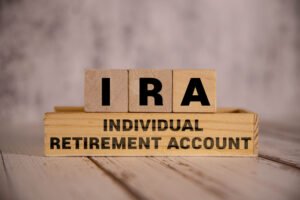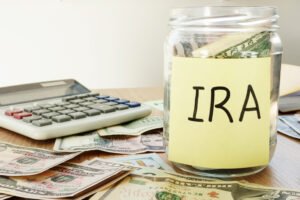Retirement
A stretch annuity lets a beneficiary receive inherited annuity payments over an extended period rather than all at once. Spreading payments over time can create a steadier income stream and may limit how much taxable income is recognized each year. The remaining balance continues to grow tax-deferred while payments are…
A non-qualified stretch annuity extends the payout of an inherited annuity over time, rather than receiving the full amount in a single lump sum. While qualified annuities (such as those within IRAs or 401(k)s) are subject to strict rules under the SECURE Act, non-qualified annuities, which are funded with after-tax…
When planning for retirement, one of the biggest decisions you’ll face is how to generate consistent, tax-efficient income. Two common options, annuities and Roth IRAs, serve very different purposes, but can both play a key role in your strategy. A Roth IRA offers tax-free growth and withdrawals in retirement, while…
A Roth IRA is a tax-advantaged retirement account many people use to build long-term savings, but its rules and benefits can be confusing. Because qualified withdrawals are tax-free, the investments you select inside the account may influence your future retirement income. Whether you are opening your first Roth IRA or…
Spousal benefits are Social Security payments based on a spouse’s lifetime earnings record, and a spouse may receive up to half of the working spouse’s benefit. Eligibility is automatic, but payments do not begin until the spouse files an application with the Social Security Administration. To help explain this, let’s…
Reaching age 65 doesn’t automatically change how the IRS taxes your 401(k) withdrawals. Instead, it taxes distributions from a traditional 401(k) as ordinary income, just like wages or Social Security benefits. Your tax rate depends on your total taxable income and filing status in the year you make the withdrawal,…
A 401(k) loan does not appear on your credit report because it isn’t considered a loan from a third-party lender. When you borrow from your 401(k), you’re borrowing your own money. As such, it isn’t subject to credit checks or reporting requirements. That said, missing payments or defaulting on the…
Leaving the workforce changes many aspects of your 401(k), and once you retire you will have to make a number of important decisions about your retirement nest egg. If you have $1.1 million in a 401(k), you can choose to leave your retirement savings in the account, roll it over…
If you have ever changed jobs or you have already started saving for retirement, you have likely encountered both Traditional IRAs and Rollover IRAs. However, these two similar-sounding accounts can play very different roles in your financial future. Knowing how each works can mean the difference between maximizing your tax…
















